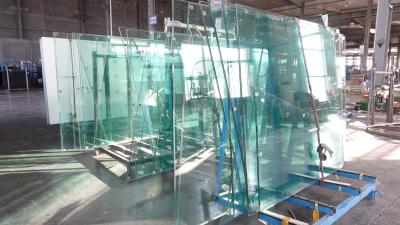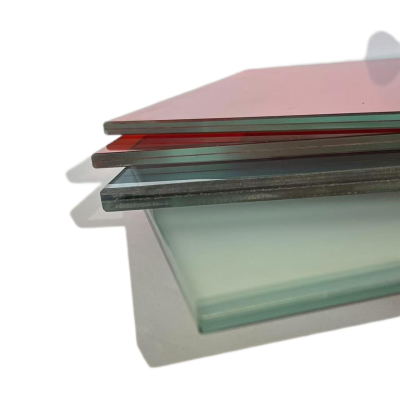Spontaneous Glass Breakage
Spontaneous Glass Breakage Report
Spontaneous glass breakage
Spontaneous glass breakage is a phenomenon by which toughened glass (or tempered) may spontaneously break without any apparent reason. The most common causes are:
1. Minor damage during installation such as nicked or chipped edges later developing into larger breaks normally radiating from point of defect.
2. Binding of the glass in the frame, causing stresses to develop as the glass expands and contracts due to thermal changes or deflects due to wind
3. Internal defects within the glass such as nickel sulfide inclusions
4. Thermal stresses in the glass
5. Inadequate glass thickness to resist wind load
Installation damage:
While glass is being moved and installed, it is easy for the glaziers to nick or chip the edges of the glass with various tools. It is also possible for fasteners such as nails or screws used to attach glass stops to nick the glass edges if these fasteners are installed at an improper angle. These small nicks or chips may not result in immediate breakage. However, over time, as the glass expands and contracts, stress concentrations can develop around the nick, leading to breakage. In the case of tempered glass the entire unit usually breaks.
Binding in the frame:
Glass expands and contracts with changes in temperature and deflects due to wind, so almost all modern glass is set on resilient blocks at the bottom and with space for expansion at the sides and top. The gaskets holding the glass in the frame are also usually resilient to cushion the glass against wind buffeting. If no space is provided at the perimeter of the unit, the glass will bind against the frame, causing internal stresses to develop in the glass which can exceed the strength of glass, resulting in breakage.
Internal defects and inclusions in the glass:
Nickel sulfide inclusions ("stones") can be present in the glass. The most common cause of these inclusions is the use of stainless-steel machinery in the glassmaking and handling process. Small shavings of stainless steel containing nickel change structure over time and grow, creating internal stresses in the glass. When these stresses exceed the strength of the glass, breakage results. This type of breakage is almost always found in tempered glass and is indicated by a distinctive "figure eight" pattern, with each "loop" of the figure eight approx. 30mm in diameter.
Alternatively, small pieces of refractory brick can be eroded by the molten glass from the internal walls of the furnace during processing and become embedded in the finished glass. These are also known as "stones", and can also break the glass when the glass is heated, as they create thermal anomalies.
Thermal stresses:
Breakage due to thermal stress is most common in large pieces of sealed insulating glass with heavy heat-absorbing (reflective) coatings. The coating is usually applied to the "number two" surface (the inside face of the outside lite). This causes the outside lite of glass to heat up more than the inside lite as the coating converts radiant heat from the Sun into sensible heat. As the outer lite expands due to heating, the entire unit bends outward. If the spacer bar or other edge condition connects the two lites of glass in a very rigid manner, bending stresses can develop which exceed the strength of the glass, causing breakage. This was the cause of extensive glass breakage at the John Hancock Tower in Boston.
Inadequate glass thickness:
A pane that is too large or thin, having not been properly engineered for wind loads on the site, can be broken by the wind. See Bernoulli's Principle on wind.
Remedies:
Any breakage problem has more severe consequences where the glass is installed overhead or in public areas (such as in high-rise buildings). A safety window film can be applied to the tempered panes of glass to protect from its falling. An old-fashioned precaution was to install metal screens below skylights.
For the processing way, we can use heat soaked glass which can reduce the spontaneously break or if the glass need no color, we can choose ultra clear glass as material. The normal glass spontaneously break rate is about 0.3%, but the ultra clear glass can reduce it to 0.01%; heat soak is also a way to reduce the spontaneously break, but it can only reduce it to 0.1%. Till now, the spontaneously break is a world problem, even the world first rank team processor of AGC, TAIWAN GLASS, PPG, ST. GOBAIN, AND PILKINTONS etc all facing this kind of problem and none of them can solve it. It appeared at the same time when people developed the toughened glass.
There is also have no certain time for the spontaneously break of tempered glass, may right after tempering, two months after tempering, 1-3 year after installation etc.
Thank you.
Tony,En
0086 15169185915
Shandong Wensheng glass Technology Co Ltd
2022-06-15


































































































































































































